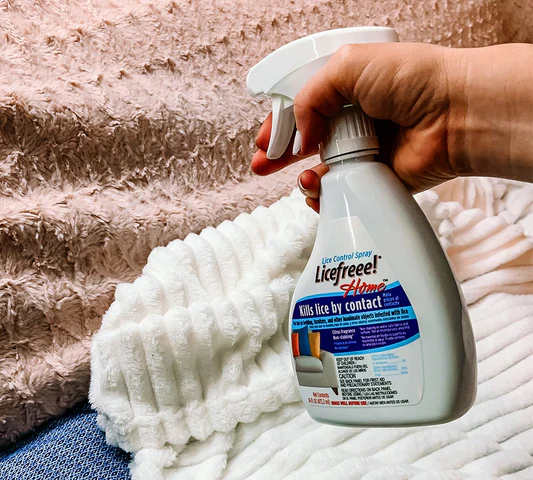
Can Head Lice Bite Your Body?
When dealing with a lice infestation, one common concern is whether head lice can bite your body. The good news is that head lice are species-specific parasites that remain confined to the scalp and do not migrate to other parts of the body. However, body lice, a different type of lice, can infest clothing and bedding and bite the body. Understanding the difference between head lice and body lice is essential to properly address the issue and prevent unnecessary worry.
Head Lice vs. Body Lice
Head lice and body lice might seem similar, but they are entirely distinct in behavior, habitat, and how they affect humans.
Head lice live exclusively on the scalp, where they feed on blood and lay their eggs (nits) attached to the hair shafts. They are perfectly adapted to cling to hair and thrive in the warmth of the scalp, making them highly unlikely to venture to other areas of the body. Without access to the scalp, head lice cannot survive for more than 24–48 hours.
Body lice, on the other hand, reside in the seams of clothing and bedding, only coming into contact with the skin to feed. Often referred to as "clothing lice," these parasites thrive in environments with poor hygiene, where clothing is not washed regularly. Body lice infestations are more likely to occur in crowded living conditions, such as shelters or disaster zones. Unlike head lice, body lice can bite various parts of the body and are capable of spreading diseases in severe cases.
Can Head Lice Bite Your Body?
The short answer is no—head lice do not bite your body. Their habitat is limited to the scalp, where their specialized legs help them cling to hair. If you’re noticing bites or irritation on your body, the culprit is likely body lice or another pest, such as bedbugs or fleas.
Signs of a Head Lice Infestation
While head lice cannot migrate to your body, they can cause discomfort. The most common signs of a head lice infestation include itching caused by an allergic reaction to their saliva, visible lice or nits on the scalp, and sores from excessive scratching. If you observe these symptoms, it’s important to treat the infestation promptly to prevent further spreading.
What Are Body Lice?
Body lice are a separate species of lice that infest clothing and bedding rather than living directly on the skin. Commonly called "clothing lice," they are associated with environments where hygiene is poor or washing facilities are inaccessible. Unlike head lice, body lice do not lay their eggs on the human body but instead deposit them in the seams of clothing or fabric.
When a person wears infested clothing, the lice crawl onto the skin to feed, causing itching and irritation.
Body lice infestations are often seen in crowded or unsanitary conditions, such as refugee camps, shelters, or disaster zones. Transmission usually occurs through close contact with an infested person or their clothing and bedding. If you suspect body lice, consulting a physician is the best course of action, as these infestations may require specialized treatments.
Managing a Lice Infestation at Home
While head lice do not infest your body, they can temporarily survive on furniture, bedding, or other household items. Addressing the home environment is an important step in managing and preventing re-infestations. The Licefreee Ultimate Kit is an excellent solution for treating head lice while also tackling lice in your home. This comprehensive kit includes a lice treatment spray that kills lice and nits on contact, a fine-toothed metal comb to remove nits from hair, and a home spray for treating furniture and other non-washable items.
Although Licefreee products are not intended for body lice treatment, they can help eliminate head lice from your hair and living spaces effectively.
What to Do If You Suspect Body Lice
If you believe you’re dealing with body lice, the best course of action is to consult a physician. Body lice infestations are not treated with head lice products and typically require medical intervention. In addition to seeking professional guidance, you’ll need to thoroughly clean your environment by washing all clothing, bedding, and towels in hot water and drying them on high heat. This helps to kill lice and their eggs, preventing further bites or re-infestations.
Head lice and body lice may share some similarities, but they are entirely different parasites with distinct habitats. Head lice cannot bite your body or migrate beyond your scalp, while body lice infest clothing and can bite other areas of the body. Proper treatment and understanding of these pests are crucial to managing infestations effectively.
For head lice, the Licefreee Ultimate Kit offers a powerful, all-in-one solution to treat the scalp and home environment, ensuring lice and nits are eliminated quickly. If you suspect body lice, consult a healthcare provider for appropriate treatment and take steps to sanitize your clothing and living spaces. Understanding these differences will help you address infestations with confidence and peace of mind.



